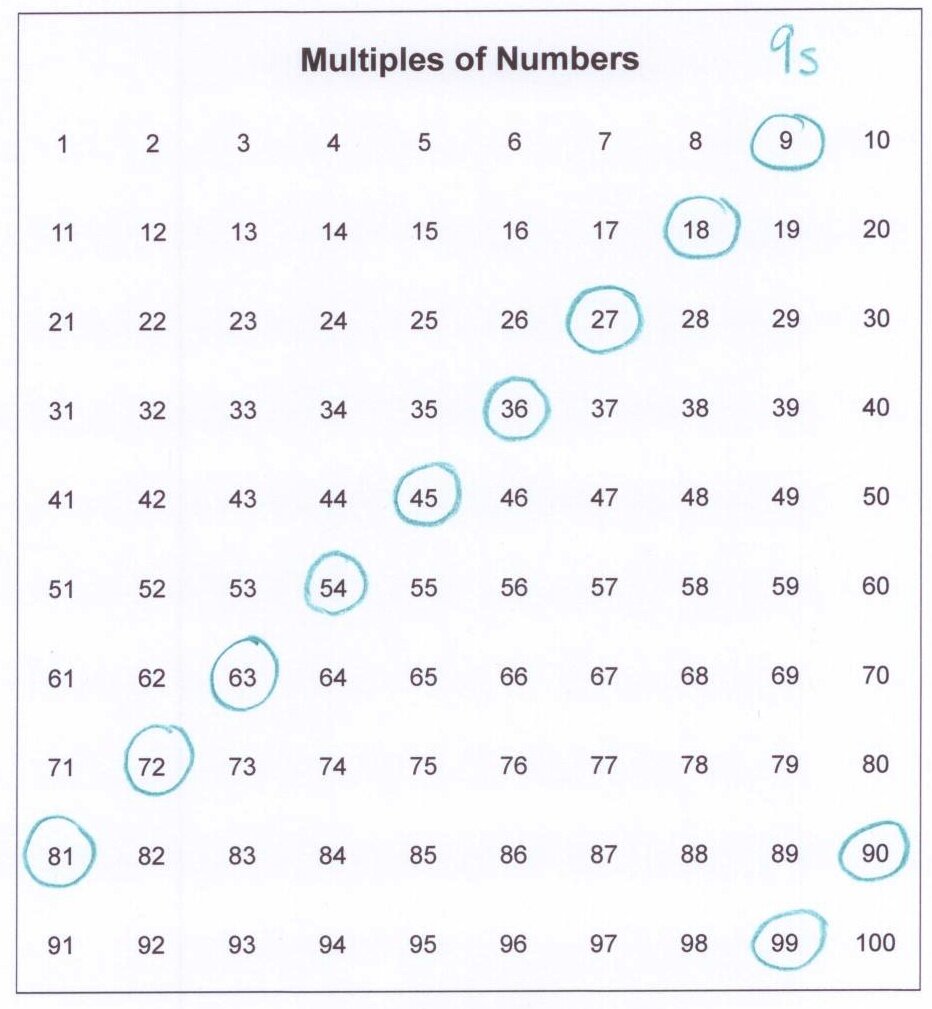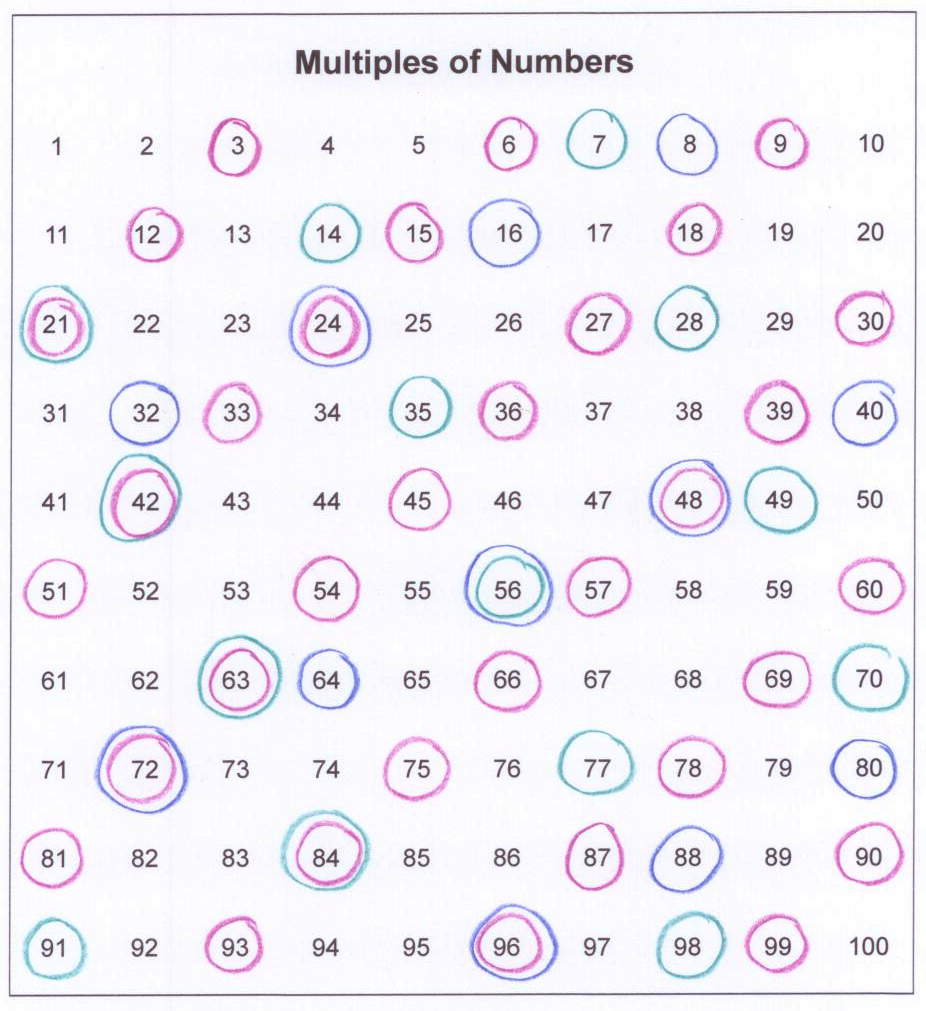As part of children's explorations of skip counting, multiples, and factors, in a Montessori classroom we give children "multiples of numbers" paper which allows them to practice skip counting and explore patterns of numbers. Children can also look for patterns of common multiples by counting multiples of two or more numbers, all on the same sheet.
This is an activity that has wonderful potential, but my experience of following the procedure strictly as laid out in my own Montessori teaching albums (which is just the basic how-to) is that the children love it, and will do page after page, but they don't necessarily develop any deep mathematical understanding as a result. This week, inspired by an activity on YouCubed, I decided to take this multiples of numbers paper and run with it.
First, I asked the children to look at their hundred charts and share what patterns they noticed. The first thing they noticed is patterns you get when you color in a square of four adjacent numbers. The units go up by one when you go to the right and the tens go up by one when you go down a row.
This has little to do with multiples, but was a hugely valuable discussion. I discovered that many of them struggled to connect their knowledge of units and tens as quantities with written numbers, and we had an excellent conversation about what the different digits represented. I'm certain this particular struggle is in no way unique to this group of children; it's just part of developing decimal system knowledge.
Next, a child noticed that the numbers at the end of the row all end in zero. This child also noticed that if you color every other row in the 9s column, the numbers start 1, 3, 5, 7, 9, which are all the odd numbers. We could have gone on to discover that this same pattern holds in every column, but instead, someone pointed out that these numbers show up in the rows if you start at 1 and count by twos. Since skip counting is where I ultimately wanted to go with this, we ran with it. This also gave us a great chance to discuss the fact that, when you go from 19 to 39, you're going up by 20, not by 2.
Next, somebody discovered that the numbers 11, 22, 33,... all line up in a diagonal. I hope someone will discover that these are the multiples of 11!
At this point, I decided to give them the actual multiples of numbers lesson. I showed them how to start by coloring in 3, and then count three more to get to 6, then three more to get to 9, and so on. Then we did something that's not part of the usual lesson. I showed them that they could skip count by threes starting at a different number. We started at 1 and counted by threes, landing on 1, 4, 7, and so on. When I left them to keep working, they had noticed that the colors come in pairs, one pink and one green, and that you can make a zig-zag down the page going.
When we get back together to continue this work, I will introduce the idea of multiples, and we'll talk about which of our skip counting patterns make multiples and which don't. This is a bit backwards from the usual sequence of lessons in Montessori, but I like it better. They children will have far more context for understanding multiples than if I just introduced them to the concept first.
Here are two important technical discoveries I've made, if you want to do this yourself:
I don't call the paper "Multiples of Numbers Paper" because we aren't limiting ourselves to multiples.
I used the paper with the grid squares drawn in simply because I had easy access to it, but I've decided to switch to it permanently. Coloring in the squares makes the patterns so much more obvious than circling the numbers does.
The best part of this whole discussion? On Friday afternoons, I always ask my students to share one thing they learned during the week. One of the students who participated in this activity said, "I learned that math is patterns, too!" My math teacher heart grew three sizes that day.





